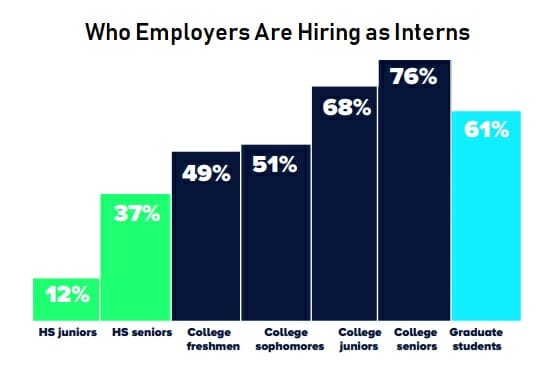With high school and college students about to begin summer internships, I thought the timing right to discuss this increasingly standard practice at companies, one which offers both benefits and challenges to HR professionals.
Judging from an event we attended a couple months ago in our hometown of Boston, called “STEM and the Massachusetts Workforce Challenge: Exploring Solutions to the College Graduate Shortage,” internships are also top of mind for our Lt. Governor, Karyn Polito. Among the State House’s priority issues regarding workforce development was a specific call to action from the Lt. Governor regarding the need for more paid high school internships.
One would think there is a plethora of qualified interns – both high school and college – not just in the Commonwealth of Massachusetts, but in the rest of the country as well. But, according to the results of a survey of nearly 500 human resources professionals conducted by my organization, American Student Assistance, the exact opposite is true. In fact, 63% of medium and large companies that hire interns say that finding qualified interns is “somewhat” or “very” challenging.
Because of our organization’s commitment to helping students and families make informed decisions about their higher education and career opportunities, ASA conducted this survey to clarify the internship landscape and to shed light on the opportunity to improve internships as a valuable and high-quality career exploration tool.
Who’s offering internships
Not surprisingly, large companies (500+ full-time employees) are the most likely to have internship programs, staffing an average of 13 interns at any given time (89%). Small companies (<50 full-time employees) are the least likely to employ interns.
Our survey results indicate that companies feel internships are a way to give back to the academic community while also filling an employment pipeline and assisting with ongoing work, including research, data entry and analytics.
Finding the best interns is a primary goal of companies. Out of the multitudes of applicants, less than a third of candidates are actually offered an internship, the survey finds. While HR professionals are confident in their organizations’ internship programs, they still note challenges, showing a desire for training coupled with services and resources to help support and improve them.
The survey shows that HR professionals seek and utilize a wide variety of online, print and live resources and services to assist them as they implement – and grow – their internship programs. There is a desire among companies to expand internship programs, so it’s likely the demand for resources and services targeted toward advancing internship best practices will increase as well.
Interns in the hiring pipeline
The most important lesson learned: Internships matter. Our research tells us:
- Two-thirds of companies (7 in 10 medium and large companies) are more likely to hire someone for full-time employment if they had an internship;
- 75% of companies extend an offer of full-time employment to 10% or more of their intern workforce; and
- 62% of employers look to internships to fill the entry-level employment pipeline.
Many HR professionals without programs say they wish they had one, but face challenges:
- 48% say that determining the best recruitment process to help them find quality interns would be challenging for their company;
- 46% feel securing funding to hire qualified interns would be difficult; and
- 34% indicate maintaining internal support would be difficult for their company.
A need for policy changes
The survey clearly points to the need for wide-reaching policies at the state and/or federal level to:
- Encourage additional government investment in internships as a practical workforce development strategy;
- Make internships more broadly available and accessible to students; and
- Decrease the financial and administrative burden of internships on employers.
Policy recommendations that ASA is considering include creating financial incentives like tax credits and state grants for employers to expand internship opportunities; establishing statewide internship coordination systems; encouraging greater private sector investment; eliminate the exemption that allows for unpaid government internships; and ensuring all states have established guidelines for providing academic credit toward graduation for internship work experience in high school.
In light of what we learned from our survey, ASA will explore the opportunity to build a solid coalition of business leaders to help push for these policy changes. Will you join us?
